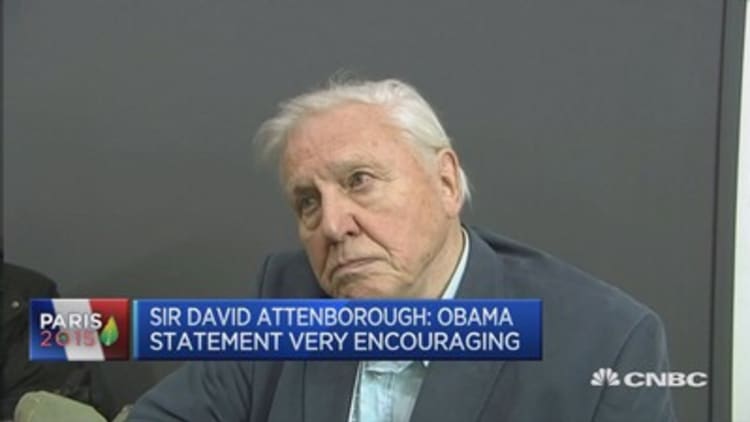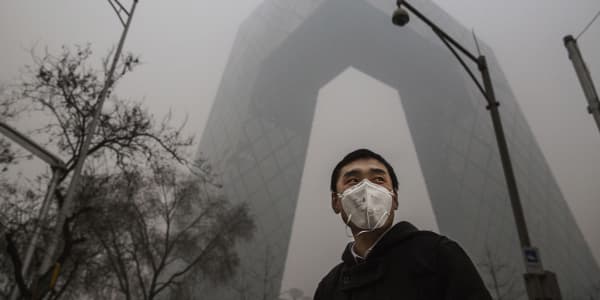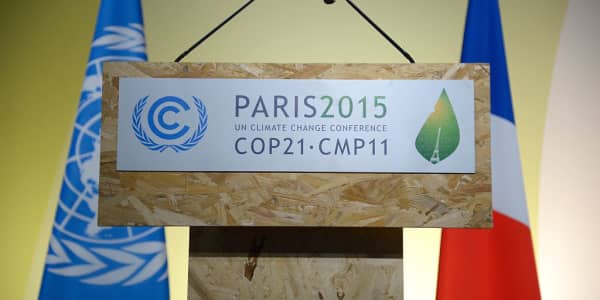After the disappointment of Copenhagen in 2009, hopes are high that global leaders will strike a comprehensive deal to combat climate change at the COP21 meeting in Paris.
Still, it will be challenging for more than 190 countries to agree on how exactly they'll keep the globe from overheating.
"There are still a number of reasons to be optimistic," Mikael Karlsson, president of the activist network the European Environmental Bureau EEB, told CNBC.
This time around, private companies are on board, he said, while climate scientists and economists are much more clear on the devastating costs of failing to cut carbon emissions.
Here, we explore what could realistically be achieved before everyone goes home on December 11.
Climate-busting penalties
The real contention, though, is whether countries who fail to implement targets will be punished.
U.S. Secretary of State John Kerry has already shot down plans for any kind of international treaty, and that any agreement wouldn't produce a legally binding measure akin to the 1997 Kyoto Protocol.
Speaking to CNBC on the sidelines of the COP21 conference in Paris, Christiana Figueres, the executive secretary for the U.N. Framework Convention on Climate Change, says there won't be penalties, but insisted that some segments will be legally binding.
"Penalties have been shown not to work in the past. There were penalties inserted into the Kyoto Protocol and they were never made effective for many different reasons," she said.

Karlsson says there are more basic issues around reporting that need to be dealt with first.
"Reporting of emission reductions needs to be harmonized," he said. "Otherwise it's hard to compare and evaluate, how to weigh in different factors for each country."
Figueres explained that those elements, regarding transparency and verification, will be internationally enforced.
"They will be having a peer review process where they will be seeing over each other's shoulder— with respect — but they will be looking over each other's' shoulder, to see in aggregate how are we doing along the path to staying under 2 degrees (Celsius)," she said.
Still, Crawford-Brown suggests that discussions around material penalties may extend beyond the conference over the next six months.
Those penalties could eventually result in economic sanctions and trade embargoes, he explained, stressing that it's still hard to tell how forceful any penalty would be.
"Most don't think we're going to be walking away from Paris with an inked document that described these things, but that verbiage will likely continue into 2016," Crawford-Brown said.
Filling the big money pot
Back in 2011, members of the United Nations Framework Convention on Climate Change (UNFCCC), agreed that developed nations would shell out cash to help the world's less-developed states both prevent and adapt to the effects of climate change, like extreme weather and rising sea levels.
But it's a lot of cash: the Green Climate Fund is meant to gather and distribute $100 billion annually by 2020 and it's nowhere near its goal, having only reached $10 billion last December.
"We have to deal with adaptation strategies for vulnerable nations hit heavily by climate change but that don't have the resources," Doug Crawford-Brown, a professor and director at the Cambridge Centre for Climate Mitigation Research told CNBC.
"It can be done: it's one of those things where you just need money being put into a pot," he said.
But the Paris conference couldn't be more perfectly timed.
Crawford-Brown said the developed world may be ready to loosen the grip on their purse strings.
"Coming out of the global recession, countries seem willing to put money in," he said.
The buddy system
Many have bemoaned that past emissions targets, such as the Kyoto Protocol in 1997, in the past have taken a very "top-down" approach.
This time, countries come armed with their own Intended Nationally Determined Contributions (INDCs), or, their plans for how to individually cut emissions.
Crawford-Brown says there's scope for some bilateral partnerships that could see developed and developing countries pair up to collectively reach combined carbon reduction targets.
This would allow more affluent states to put in more of the cash, but implement green projects in developing countries where there are greater opportunities for impactful changes and efficiencies in the energy sector or agriculture.
"It gives countries a bit more flexibility going forward," Crawford-Brown said.






